We have been tasked to answer a number of questions which detail the contextual implications of Pan’s Labyrinth.
1. Synopsis
There are two distinctive worlds featured throughout the film, being the gritty war-torn reality and the fantastical labyrinth realm. Through this, Guillermo del Toro manages to tell two intertwining stories which can never be fully explained without delving into details featured within the other tale.
Real world:
It is 1944 and General Francisco Franco is the fascist ruler of Spain. Captain Vidal and his falangist troops have taken control of a mill in the mountains of Spain. They stockpile food there, giving the civilians barely enough to eat so that they can’t afford to give any supplies to the leftist guerrillas in the woods. Vidal has married Carmen, who bares his child. He sends for her because he wants to be present at the birth of his son. Vidal has little time for Carmen’s young bookish daughter, Ofelia. Unbeknownst to Vidal, his housekeeper (Mercedes) has a brother who leads the rebel maquis. She and Doctor Ferriero secretly supply the guerrillas. The communist rebels retake the mill shortly after Carmen dies during childbirth. As the falangists are overrun, Ofelia kidnaps the newly born child. Vidal follows her into a nearby labyrinth where he shoots the girl and reclaims the baby. He is confronted at the entrance of the labyrinth by Mercedes and a large group of maquis. Pedro (Mercedes’ brother) shoots Vidal under the right eye and kills him. A weeping Mercedes cradles Ofelia. Ofelia dies.
Fantasy world:
Princess Moanna sneaks out from the underworld to become mortal and dies. Her spirit passes through countless humans. The king of the underworld vows to wait for Moanna’s return. A fairy leads Ofelia to a labyrinth where a faun tells her she is a reincarnation of Princess Moanna and that she needs to return to the underworld. However, to make sure that her magical spirit is still intact, Ofelia has to successfully perform three tasks — obtain a key from the belly of a giant toad (that is killing a tree where enchanted creatures rest); use the key to retrieve an item from a locked door guarded by a demon (the Pale Man); spill the blood of an innocent into the portal of the underworld. The faun instructs her in sorcery. Ofelia is distracted because of her sick mother and fails the second task. Ofelia passes the final test by sacrificing her life instead of her brother’s. Princess Moanna returns to the underworld where she rules with “justice and a kind heart”.
2. When and where do the events in the film take place?
The period featured, 1944 in Spain, is intriguing as it is clearly a period where the rumblings from the Spanish Civil War are still being felt despite the war itself having finished in 1939.
The film takes place in a military outpost located outside Madrid in rural Spain. The presence of the fascist Falangists as well as the cowering rebel Maquis are effervescent throughout the duration of the film.
3. Briefly, what was the Spanish Civil War about? When and how did it start and end?
The Spanish Civil War was a military revolt against the Republican government of Spain which lasted from 1936 to 1939. After an initiative coup d’état failed to win control of the country, a civil war ensued between the Falangists led by General Franco and the Spanish Republicans.
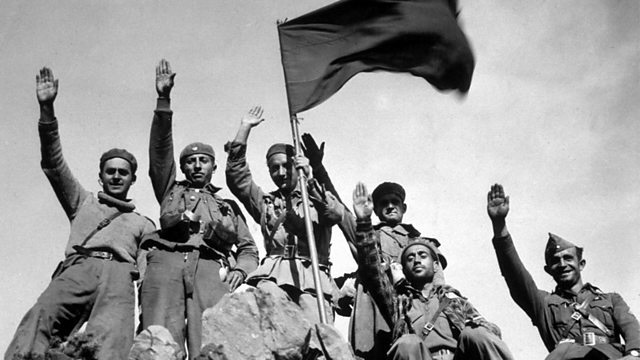
4. Which of the factions does the Captain represent? Why is he stationed at the mill?
Captain Vidal is very much representative of the Falangists, who are in the process of exterminating the few remaining Spanish Maquis rebels who are currently residing in the mill.
5. Which of the factions do the people in the mountains represent? Why are they hiding?
The people hiding in the mountains are representative of the few remaining Spanish Maquis rebels. They are hiding from the malicious fascist Falangist regime, led by Captain Vidal.
6. Which of the factions do the political and religious elite support? Why?
Political elites featured throughout the film are clearly in support of the Falangist faction, due to most political parties forming an alliance to initiate the coup of July 1936. Religious elites are additionally in support of the fascists due to the power and wealth of the catholic church. Throughout the film, a priest is shown participating in the feast hosted by Vidal which emphasises that the church is on the side of the nationalists.
A local priest, attending a meal held by the Captain, dismisses the possible pain felt by the rebels on theological grounds. His representation lacks humanity and is clearly a barbed commentary on an out of touch and complicit Catholic church: “God has already saved their souls. What happens to their bodies hardly matters to him.” Del Toro uses the cinematic conceit of a banquet to heighten the corruption of the local middle classes and ruling elite. Despite his criticisms of Catholicism as a dogma and institution it is clear that Del Toro admires the spirituality of his native religion — in a later film Crimson Peak, a ghost story, he commented on his belief in ghosts. The scene above is strongly redolent of a stylised heaven with its church-like setting, a rosary window flooded with golden light and a grey bearded father figure flanked by a doe-eyed mother. It is all rather stuffy and formal befitting a royal court perhaps but not a fairy domain. That said it is clearly Ofelia’s (Princess Moanna’s) ‘happy place’ — she has come home to a loving warm family and an adoring people.
7. Which of the factions do the peasants support? Why?
Throughout the film, the peasants are shown to be in support of Vidal and the Falangists. Despite the Marquis rebels offering arguably more just ideals, the deprived peasants are utterly dependant on the fascists for food and other resources.
8. What role do women play in the two factions?
The representation of women is evidence of the social problems women faced in this patriarchal and macho era.
Women play a vitally important role in both factions featured throughout Pan’s Labyrinth. For example, pregnant women such as Ofelia’s mother represent the future generation of the fascists, due to the fact that Carmen is pregnant with Vidal’s unborn son. In addition to this, women are portrayed as subservient to the ‘superior’ male, holding roles such as a mere servant in the case of Mercedes. However, characters such as Ofelia recontextualise the role women hold when she shows a level of rebellion against the captain.
9. How is food an important symbol in the film?
The symbol of food presented throughout the film represent a variety of contextual ideas. For example, it is presented as a vital necessity as the peasants struggle to survive as Captain Vidal thinly rations the available resources. Moreover, in the realm of the labyrinth, food is symbolic of the biblical ideology of temptation when Ofelia is punished by the Pale Man for eating two grapes.
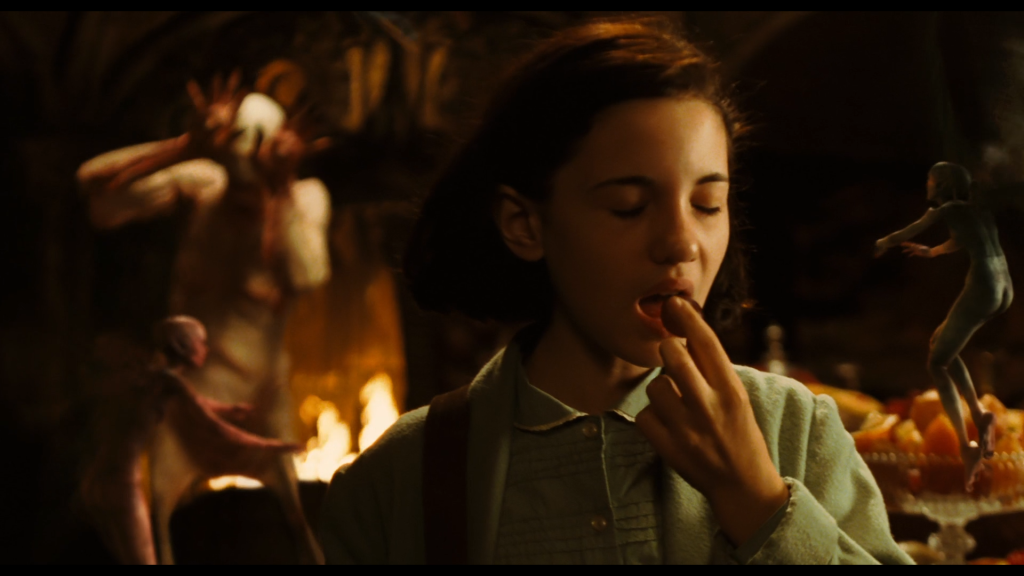
10. How is poverty an important theme in the film?
The theme of poverty is expressed throughout the film through the depiction of the rebellion against the fascist regime that has conquered Spain. The deprived Maquis rebels are poverty-stricken by the Falangist political elite and this forges the motivations for the uprising by the peasants.
11. How is time an important theme in the film?
Time is important theme presented throughout Pan’s Labyrinth illustrated predominantly through the symbol of Vidal’s pocket watch. This watch holds invaluable sentimental value to the captain and is visually symbolic of Vidal’s necessity for rule and order.
12. How is disobedience an important theme in the film?
Disobedience is the underlying motif that emanates throughout the course of the film. It is representative of the motivations behind the Maquis rebels’ actions and this exemplifies how the choice of rebellion is sometimes morally correct. Ofelia must choose whether to blindly follow Vidal’s authoritative order, or disobey and overthrow the fascist regime.
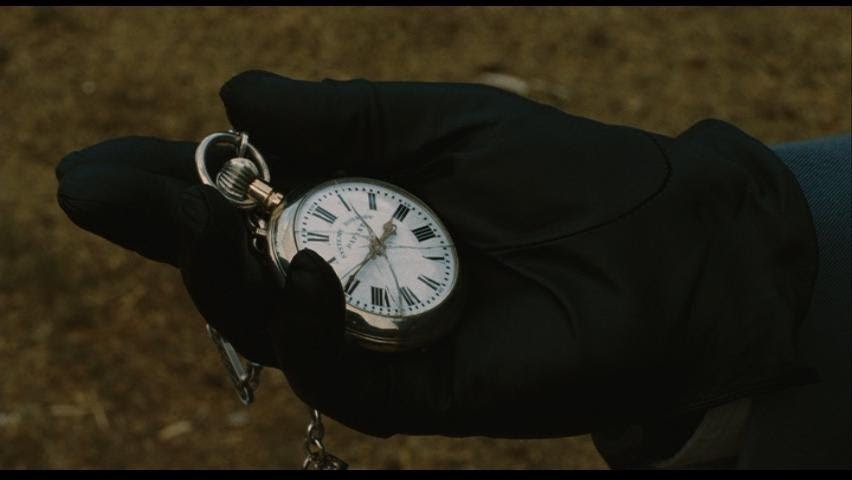
13. How and in what ways does Pan’s Labyrinth draw on fairy tale and fantasy tropes and archetypes?
The film pays homage to traditional fairy tales throughout the film. For example, Ofelia dons a stereotypical dress worn by both Dorothy and Alice from their respective tales. In addition to this, the Pale Man is representative of typical stories such as Hansel and Gretel by tempting Ofelia with grapes.
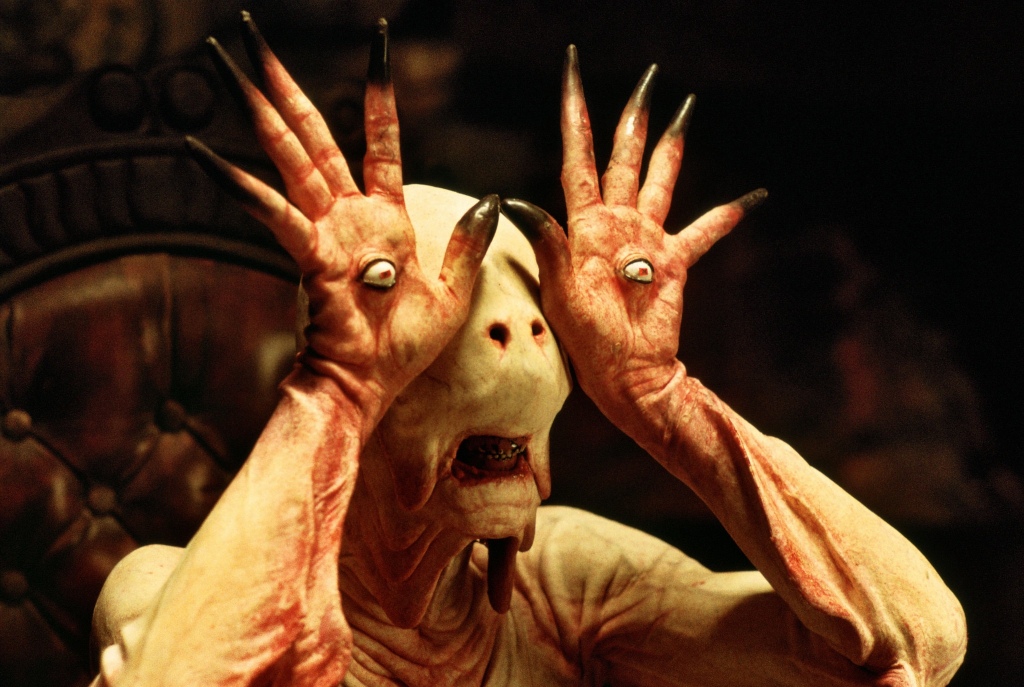
14. How is fascism portrayed in the film?
Fascism is portrayed throughout the film through the depiction of the Falangist regime. The authoritative portrayal of the fascists emphasises them as a threatening and overbearing presence. Punishments issued by Vidal are depicted in excruciatingly brutal detail and this invokes a visceral reaction within the viewer.
The negative depiction of Franco’s fascist forces is clearly intended to be extended to the imaginative poverty of fascism in general — in contrast to the more benign and sensitive (although hardly democratic) fairy kingdom. A more realist political representation is that of the guerrillas who are presented as resourceful and determined and egalitarian. Mercedes’ love of children (Ofelia and her baby brother) suggests a tenderness and a celebration of all things childish — indeed, unlike Ofelia’s weak and dismissive mother, Mercedes gives advice on the handling of fauns.
15. How does Guillermo del Toro employ uterine and yonic imagery in the film?
Del Toro utilises uterine imagery in a variety of ways. For example, the faun’s head has a striking resemblance to a uterus, fallopian tubes and ovaries. GdT has additionally confirmed the use of a “fallopian palette of colours”. The trees are also uterus-shaped and there is a detailed depiction of Ofelia’s unborn brother in Carmen’s womb. This could perhaps be symbolic of Ofelia’s developing maturity as the film progresses.
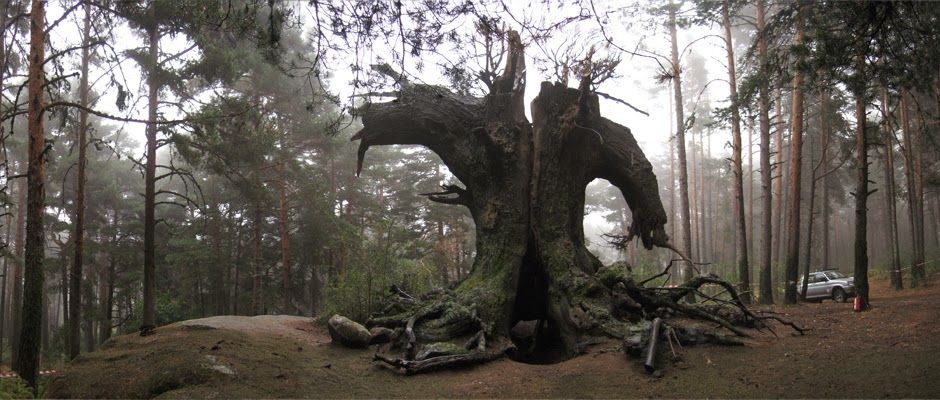
16. How are maternal instincts presented in the film?
Maternal instincts are presented throughout the film through the characters of Mercedes and Carmen. Both characters attempt to nurture Ofelia in vastly different ways. For example, Ofelia’s mother attempts to indoctrinate her into joining the Falangists and addressing Vidal as her father. Conversely, Mercedes shows Ofelia the way of the rebellion and guides her towards the path of uprising. Ironically, Mercedes’ role as a mother-figure to Ofelia holds greater importance to her than her biological mother.
17. What is the significance of faces and shaving in the film?
Throughout Pan’s Labyrinth, Vidal is often depicted shaving his face in an extremely precise and dexterous manner. He makes it a prominent part of his routine and focuses his full attention towards it. This is representative of Vidal’s obsession with being in control and the razor used is symbolic of threat and terror.
18. What is the significance of flowers in the film?
Flowers depicted throughout the film are representative of purity and authenticity. Appearing at the end of the film, Ofelia’s rose represents her everlasting presence as well as the journey she completed over the course of the film. The rose could potentially symbolise eternity, implying that Ofelia’s actions have made a permanent impact upon the fascist regime.
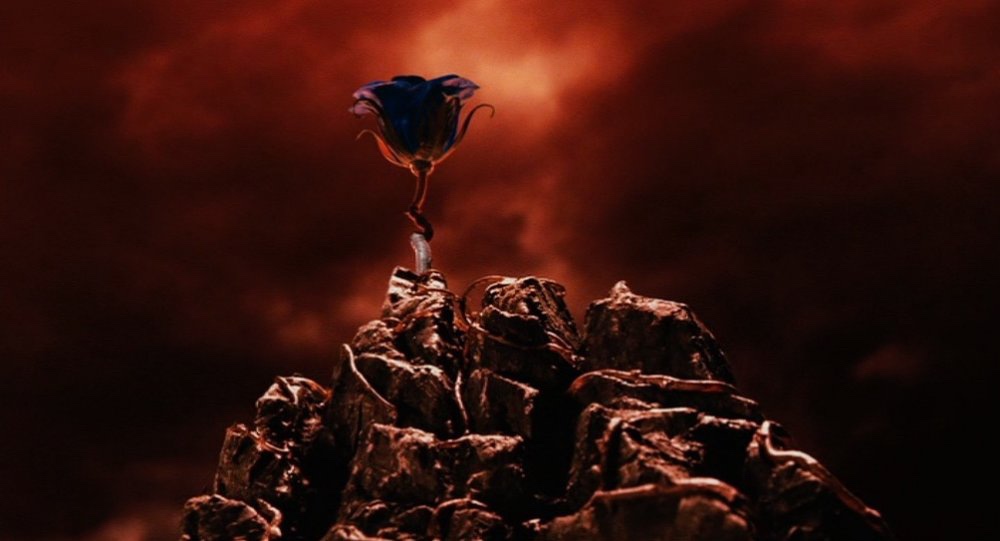
19. How does Guillermo del Toro operate a ‘one for them, one for me’ filmmaking policy?
After directing the critically condemned big budget blockbuster Mimic (1997), del Toro used the funds from this to produce and direct The Devil’s Backbone. This alternation between a studio project followed by a passion project became typical for del Toro, and this is the film that cemented it. Pan’s Labyrinth is a key example of a GdT passion project. After recently directing the Hollywood blockbuster Hellboy (2004), del Toro used the funds earned from this project to fully focus his efforts on Pan’s Labyrinth, the film he made for himself.
20. How far is Pan’s Labyrinth representative of Guillermo del Toro’s oeuvre?
Pan’s Labyrinth is an quintessential example of what makes a Guillermo del Toro film so recognisable. Firstly, the film is spoken in the director’s native language, Spanish, which reinforces just how much of a passion project this film really is. In addition to this, the film features heavy use of ultra-violent injury detail – especially in the facial area. This inordinately specific quirk is extremely typical of GdT’s filmography and Pan’s Labyrinth is no exception.
Del Toro as an effective and idiosyncratic fantasy/horror auteur is evidenced in his earlier films such as Cronos (1993), The Devil’s Backbone (2001) and Crimson Peak (2015) as well as in his much more mainstream Hollywood work such as Hellboy (2004) and Pacific Rim (2013).
21. How did the critical reception of The Devil’s Backbone influence the production of Pan’s Labyrinth?
Del Toro has stated that Pan’s Labyrinth is a spiritual successor to The Devil’s Backbone in a thematically linked trilogy of films. The critical reception of The Devil’s Backbone was mostly positive receiving an average score of 7.4/10 on IMDb at the time of writing. This positive acclaim encouraged audiences to go and watch Pan’s Labyrinth, which has contributed to its worldwide success.
22. Was the film financially successful?
Released in the UK by Optimum. Premiered at Cannes in May 2006 to great acclaim. Co–produced by a number of Spanish, Mexican and American production companies the $19 million budget is reflected in the complex production design, period dressing and relatively large cast. The eventual worldwide box office of $83.3 million was seen as a triumph.
Being released worldwide in December among a multitude of Oscar contenders such as The Departed (Martin Scorsese, 2006), Pan’s Labyrinth, the fantasy/war dark horse surprisingly grossed $30 million and is still running strong to this day.
23. Why is the year of release of The Devil’s Backbone and Pan’s Labyrinth significant?
The two films were released in 2001 and 2006 respectively. Being released 5 years apart from each other, the years that the films are set are additionally set 5 years apart being 1939 and 1944 respectively.
24. Why physical effects over CGI?
Employing a minuscule amount of CGI within its special effects, Pan’s Labyrinth predominantly utilises a vast amount of meticulously designed makeup and animatronics to illustrate a visually pleasing spectacle.
The key technology used in this film is the animatronics and green screen work as discussed above and its effective creation of a magical-realist production design.
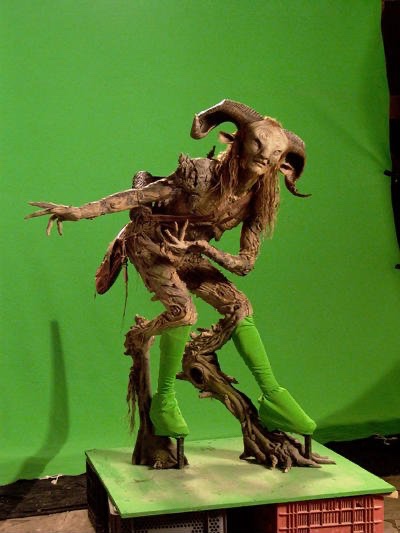
25. Why did Guillermo del Toro write the DVD subtitles himself?
Del Toro wrote the subtitles for Pan’s Labyrinth himself after becoming disillusioned with the translation of The Devil’s Backbone — a film also with the Spanish Civil War as its backdrop and the informal prequel to Pan’s Labyrinth.
Del Toro was extremely disappointed with the subtitles for The Devil’s Backbone and described them as being for the “thinking impaired” and “incredibly bad”. Subsequently, he took action into his own hands and wrote the English subtitles for Pan’s Labyrinth himself.
26. How does Guillermo del Toro use distinct colour palettes in the film?
GdT implements two distinctive colour palettes in order to visually inform the viewer as to whether the scene was taking place in reality or in the fantasy world. The labyrinth realm features predominantly warm colours such as “deep crimsons and golden ambers, almost like amniotic fluids” as noted by del Toro. Conversely, the colours of the harsh reality utilise a much colder palette, making apt use of deep blues and greens, as well as accentuated sharp angles to reinforce the brutality of guerrilla warfare.
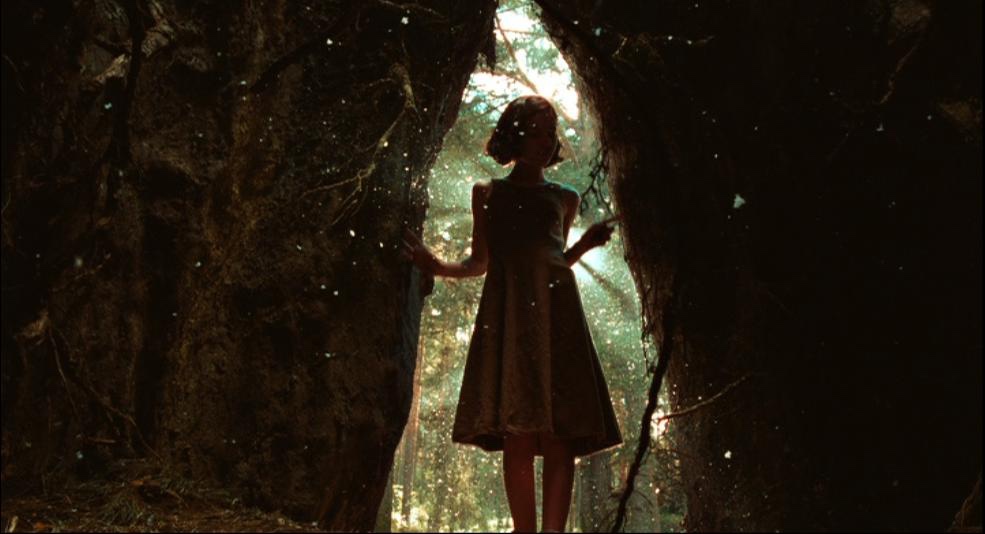
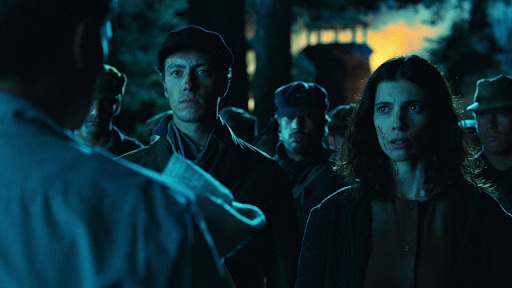
27. Look at the “context starter questions” on the Contexts Of Film mind-map. How many could you answer? Add your answers to the end of this post.
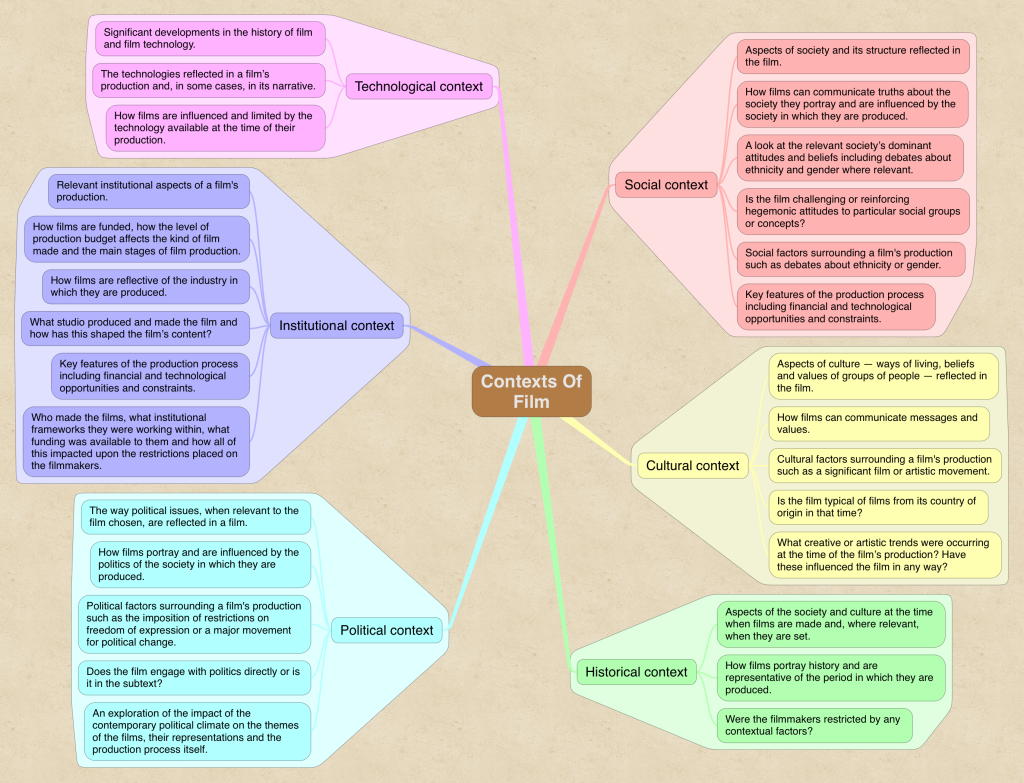
Institutional Context- How films are funded, how the level of production budget affects the kind of film made and the main stages of film production:
GdT was offered a large amount of studio money to shoot the film, as long as it was spoken in English. Refusing this to reflect his creative vision, del Toro financed the film himself with the help of fellow auteur Alfonso Cuarón.
Political Context – The way political issues, when relevant to the film chosen, are reflected in a film:
Guillermo del Toro chose to set the film five years after the end of the Spanish Civil War, as he believes it is a topic swept under the rug by most Spaniards. The Falangist fascist regime are explicitly depicted as brutal and malicious, whereas the Spanish rebel republicans are depicted as heroic and courageous.
Historical Context – Aspects of the society and culture at the time when films are made and, where relevant, where they are set:
Being released in 2006, del Toro himself has stated that the 9/11 terrorist attacks are what inspired him to make Pan’s Labyrinth. He stated that his perception of “brutality, innocence and war” changed after the destruction of the twin towers. The film’s social commentary is not exclusive to the Falangist regime but is an overall critique of fascist ideologies.